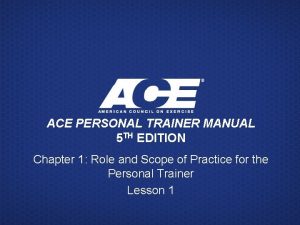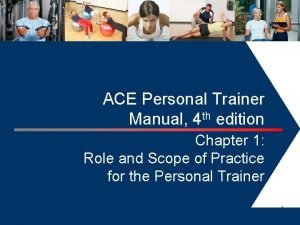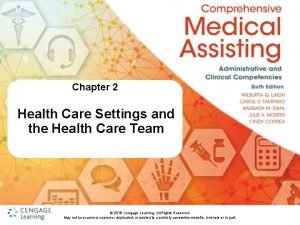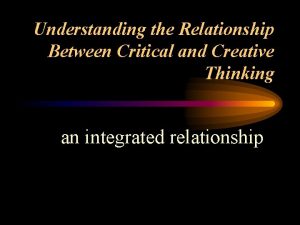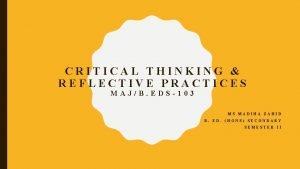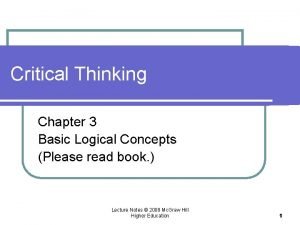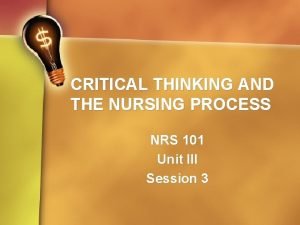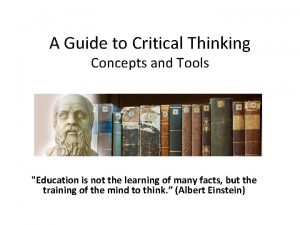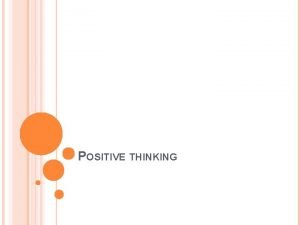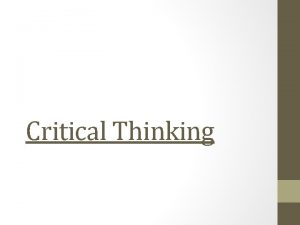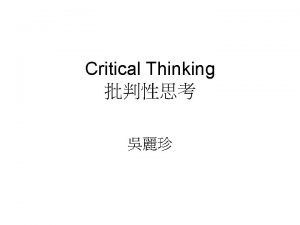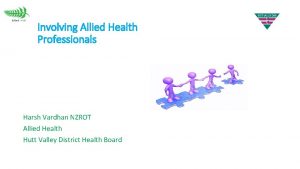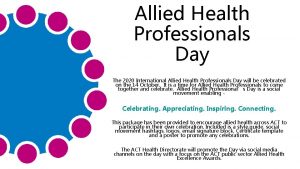Allied Healthcare Critical Thinking and Application Critical Thinking
















- Slides: 16

Allied Healthcare: Critical Thinking and Application Critical Thinking & Application Allied Healthcare

Sharpening your Critical Thinking Skills � As a member of a medical team, sharpening your critical thinking skills is essential. What exactly does this mean? � It is essential that you can make connections between a variety of facts and information, and use your knowledge base to make informed decisions.

A Critical Thinker: � asks relevant questions � assesses facts and examine situations carefully � admits a lack of understanding and seek assistance � defines a set of standards for analyzing information � listens carefully to others and give appropriate feedback � defers drawing conclusions until all facts have been gathered and well-thought-out � disallows information that is incorrect or irrelevant � is able to solve problems by applying facts to actual situations adapted from Ferrett, S. Peak Performance (1997).

Graphics and Visuals � Graphics and visuals are extremely important in the healthcare fields. � Whether you take an anatomy or pharmaceutical class, you are going to find some sort of graphic in your textbook and your instructors are going to expect that you can use this information. � Additionally, certification exams will require your understanding charts, figures, or diagrams.

VISUALS ARE MEMORY AIDES As visual learners, diagrams and charts help us to better understand apply information. Graphics are often more important than the paragraphs that surround them. Graphics most often: � Condense pages of detailed information which can be organized into a clear chart or map. � Clarify processes and relationships which can be more clearly understood visually than through pages of written information. � Provide excellent study tools.

APPLICATION § In the field of healthcare, it is essential that you can think critically. § It isn’t enough just to memorize facts; you need to know how to apply these facts to new situations, evaluate their significance and make well-thought out decisions. § Someone’s life may be in your hands

KEY POINT: � Don’t skip over maps, charts, graphs, diagrams or pictures when reading your textbooks. � These visuals are used in medical records – understand how to get the most information from them.

Test your critical thinking skills: �See how well you can understand the diagram on the structure of the human ear.

Do you understand what you see?

Questions: Refer back to the diagram Answer the following questions based on the diagram. Decide if the question is true, false or can’t tell based on the information provided. � 1. You are looking at one diagram of the ear canal. � 2. Sound enters the ear through the auditory canal. � 3. Sound enters through the auditory nerve to the cochlea. � 4. Hearing problems are the result of damage to the eardrum. � 5. If punctured, the eardrum cannot be repaired. � 6. It can be assumed from the diagram that the malleus, incus and stapes are positioned to conduct sound from the eardrum to the oval window. � 7. The basilar membrane is contained in the oval window. � 8. The cochlea might be described as resembling a snail.

Answers 1. False, two diagrams. The inner ear and the cochlea 2. True 3. False, goes through the eardrum and oval window. It comes out through the auditory nerve 4. Can’t Tell 5. Can’t Tell 6. True 7. False, in the cochlea 8. True

More Practice � Work with your group members as you apply your critical thinking skills to the exercises given in class.

GRAPHIC A. The muscular system “gives the body the ability to move, maintain posture and produce heat. It also plays a role in organ function and blood circulation. ” Where as, “the skeletal system is the framework that gives the body shape and support, protects internal organs. ” Diagram Skeletal System: Mc. Call & Tankersley, Phlebotomy Essentials, 5 th ed. Lippincott, Williams & Wilkin, 129. � � � 1. The Clavicle and Scapula are not components of the skeletal system. 2. The metatarsals and phalanges are bones in the hands. 3. The vertebral column starts at the pelvis. 4. The ilium is part of which skeletal structure? ________ 5. The humerus is attached directly to the ribs.

Graphic B: Table Classification of Bones by Shape Which are the shortest bones? ______________ 2. What shape are most of the cranial bones? ____________ 3. The most regular shaped bones in the body are the vertebrae. 4. In comparing the table with the diagram, it is easy to see why the skull and rib bones are considered flat. 1.

Graphic C: Table Cross Section of Skin. Phlebotomy Essentials, 133. 1. 2. 3. 4. 5. How many main layers of skin is there? _____ Which layer contains the pore opening? _____ Which layer houses the glands? _____________ In which section does the hair follicle initiate? _________ Nerve endings are found in which layer? ________

ALLIED HEALTHCARE: APPLICATION AND CRITICAL THINKING READING A CHART GRAPHIC D: Use the table that follows to answer questions about patient care. Emergency Care, Chapter 12 Vital Signs and Monitoring Devices, 293 A patient has lost a lot of blood, what would you expect the quality of his heart rate to be? 2. An adult’s pulse has slowed down greatly, what are some possible causes for this? 3. What is a normal pulse rate of an infant in contrast to an adult’s? 4. A child who is 12 months old has a pulse rate of 155; should you be concerned with this situation? 5. A preschooler was climbing up a tree and fell. His pulse rate was 72 what might be the cause of this? 1. NORMAL PULSE RATES (BEATS PER MINUTE, AT REST) Adult Infants and Children 60 to 100 Adolescent 11 to 14 years 60 to 105 Preschooler 3 to 5 years 80 to 120 School age 6 to 10 years Toddler 1 to 3 years Infant 6 to 12 months Infant 0 to 5 months Newborn 70 to 110 80 to 130 80 to 140 90 to 140 120 to 160 PULSE QUALITY SIGNIFICANCE/POSSIBLE CAUSES Rapid, regular and full Exertion, fright, fever, high blood pressure, first stage of blood loss Rapid, regular and thready Shock, later stages of blood loss No pulse Cardiac arrest (clinical death) Slow Head injury, drugs, some poisons, some heart problems, lack of oxygen in children Infants and Children: A high pulse in an infant or child is not as great a concern as a low pulse. A low pulse may indicate imminent cardiac arrest.
 Ace code of ethics
Ace code of ethics Allied healthcare continuum
Allied healthcare continuum Allied healthcare continuum
Allied healthcare continuum Ahs security
Ahs security Healthcare and the healthcare team chapter 2
Healthcare and the healthcare team chapter 2 Sports medicine definition
Sports medicine definition Critical semi critical and non critical instruments
Critical semi critical and non critical instruments Spaulding classification
Spaulding classification Perbedaan critical thinking dan creative thinking
Perbedaan critical thinking dan creative thinking Relationship between creative and critical thinking
Relationship between creative and critical thinking Nursing process and critical thinking
Nursing process and critical thinking Critical thinking and reflective practices
Critical thinking and reflective practices Creative thinking
Creative thinking Common patterns of inductive reasoning
Common patterns of inductive reasoning Evaluation in nursing process
Evaluation in nursing process Critical thinking concepts and tools
Critical thinking concepts and tools Critical thinking positive and negative
Critical thinking positive and negative
